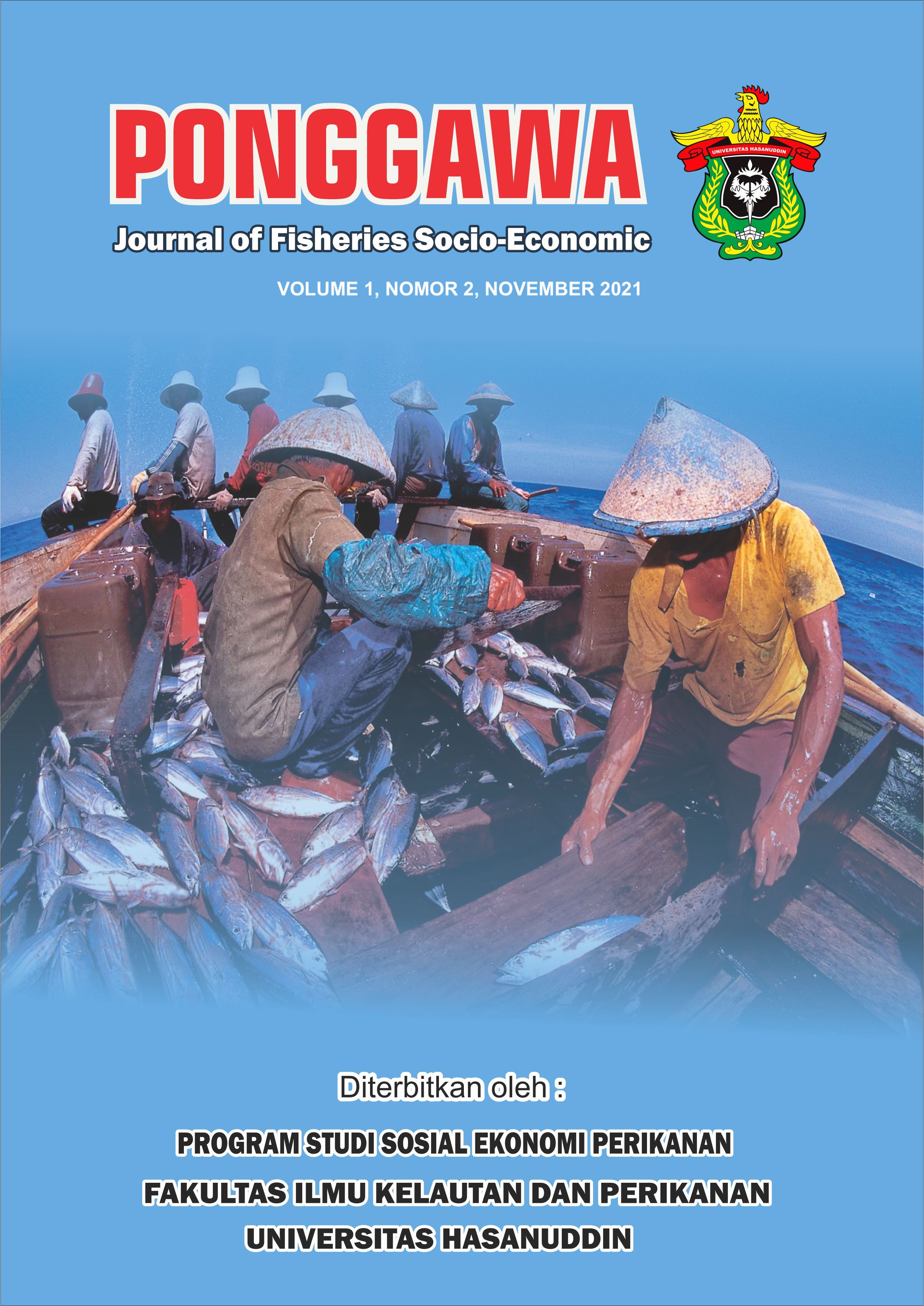The Impact of Social Media on Buying Decision of Pempek Mackerel (Scomberomorus commerson) in Makassar City
DOI:
https://doi.org/10.35911/ponggawa.v1i2.14933Keywords:
mackerel, pempek, buying decision, social mediaAbstract
This study aims to determine the characteristics of consumers who decide to buy based on social media advertisements and to find out what factors influence the purchasing decisions of mackerel fish pempek consumers in Makassar City. This research was conducted from January to March 2021. The type of research used was a survey. Research data was collected by interview method and questionnaires were distributed to 94 respondents who had bought mackerel fish pempek products online. The sampling method used is a sampling technique where the research goes directly to the field by taking respondents (samples) from the representative population by using questionnaires as the main data collection. The data sources used are primary data and secondary data and then analyzed using multiple linear regression analysis. The consumers of mackerel fish pempek in Makassar City come from various groups ranging from young people under 19 years old to elderly people over 45 years old, like students, civil servants, to housewives. Based on the results of the research, the variables of product, price, promotion, place, service, and trust together have a positive and significant effect on consumer purchasing decisions with an Fcount value of 20.935 which is greater than the Ftable value of 2.205. Partially, the product variable has a positive and significant effect on purchasing decisions with a tcount value of 2.859 > from a ttable value of 1.9876. The value of Adjusted R Square obtained from the test results of the Coefficient of Determination (R2) on purchasing decisions of 0.591 means that 59.1% of purchasing decisions are influenced by product, price, promotion, place, service, and trust. While the remaining 40.9% is influenced by other factors not included in this study.
References
Asiati, D. I., & Eljalina. (2017). Pengaruh Bauran Pemasaran Dan Karakteristik Pembeli Terhadap Keputusan Pembelian Online. Balance, XIV(2).
Dewi F. E. 2018. Analisis Pengaruh Faktor Keamanan, Kemudahan, Dan Kepercayaan Terhadap Keputusan Pembelian Konsumen Online Produk Pangan. Skripsi. Institut Pertanian Bogor. Bogor
Fawyeza. (2017). Pengaruh Harga, Kualitas Pelayanan, Dan Lokasi Terhadap Keputusan Pembelian. Skripsi: Universitas
Indriyani, R., & Suri, A. (2020). Pengaruh Media Sosial Terhadap Keputusan Pembelian Melalui Motivasi Konsumen Pada Produk Fast Fashion. Jurnal Manajemen Pemasaran, 14(1), 25–34. https://doi.org/10.9744/pemasaran.14.1.25-34
Jayanti, R. D. (2015). Pengaruh Harga dan Kepercayaan Terhadap Keputusan Pembelian Secara Online (Studi Kasus pada Harapan Maulina Hijab Jombang). Eksis, 10(1), 13–27.
Japlani, A. 2020. Pengaruh Harga dan Promosi Malalui Meia Sosial TerhadapKeputusan Pembelian Pada Butik di Kota Metro Lampung.Jurnal Manajemen: XIV(2), 168-177.
Noegroho, T., Hidayat, T., Chodriyah, U., & Patria, M. P. (2018). Biologi Reproduksi Ikan TenggirI (Scomberomorus commerson Lacepede, 1800) di perairan teluk kwandang, laut sulawesi. BAWAL Widya Riset Perikanan Tangkap, 10(1), 69. https://doi.org/10.15578/bawal.10.1.2018.69-84
Purwati, dan Rohmawati. (2012). Pengaruh Harga dan Kualitas Produk Terhadap Kepututsan Pembelian Motor Honda Matic Beat (Studi Kasus Pada PT. Nusantara Solar Sakti). Jurnal Ekonomi Dan Informasi Akuntansi (Jenius). Politeknik Negeri Sriwijaya. 2, (3)
Santoso, R. K. 2012. Pengaruh Media Sosial Terhadap Customer Retention (Studi Kasus Pada J.Co). Tesis. Universitas Indonesia
Suryaningrum, T. D., & Muljanah, I. (2009). Prospek Pengembangan Usaha Pengolahan Pempek Palembang. Squalen Bulletin of Marine and Fisheries Postharvest and Biotechnology, 4(1), 31. https://doi.org/10.15578/squalen.v4i1.145








